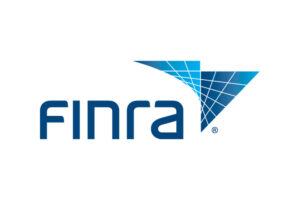Purchasing a bank represents a monumental undertaking that requires a confluence of strategic planning, regulatory insight, and financial acumen. This article aims to serve as a practical guide for potential investors, detailing the essential steps involved in acquiring a banking institution. From understanding the regulatory environment to conducting due diligence and finalizing the purchase, this guide provides a comprehensive overview of the process.
Key Challenges and Solutions in Bank Acquisitions
Acquiring a bank presents a unique set of challenges that require careful navigation. Understanding these challenges and preparing solutions in advance is crucial for a successful acquisition.
1. Understanding the Banking Sector
Before venturing into acquiring a bank, it’s crucial to have a deep understanding of the banking sector, including the types of banks (such as commercial banks, investment banks, and savings and loan associations) and the services they offer. This knowledge will help in identifying the kind of bank that aligns with your investment strategy.
2. Regulatory Landscape
The banking industry is heavily regulated to ensure stability, protect depositors, and maintain public confidence. In the United States, for instance, key regulatory bodies include the Federal Reserve (Fed), the Federal Deposit Insurance Corporation (FDIC), and the Office of the Comptroller of the Currency (OCC). Familiarizing yourself with the regulations and obtaining necessary approvals is a pivotal step in the acquisition process.
Regulatory Hurdles
One of the most significant challenges in buying a bank is navigating the complex regulatory landscape. Regulatory approvals can be time-consuming and require detailed documentation and a clear demonstration that the acquisition will not negatively impact financial stability or customer interests.
Solution: Early engagement with regulatory bodies and hiring experienced legal and financial advisors who understand the intricacies of banking regulations can streamline the approval process. A comprehensive and transparent application that outlines the benefits of the acquisition for all stakeholders can also facilitate smoother regulatory clearance.
Regulatory Compliance
Ensuring that the acquired bank complies with all relevant regulations is critical to avoid legal and financial penalties.
Solution: Conduct a comprehensive review of the bank’s compliance framework and past regulatory issues during the due diligence phase. Post-acquisition, invest in compliance training for employees and strengthen the compliance function to prevent future violations.
3. Pre-approval Requirements
Prospective buyers must meet specific regulatory requirements, which may include demonstrating financial stability, banking experience, and a sound business plan for the target bank. Regulatory bodies will assess the potential impact of the acquisition on the bank’s health and the broader financial system.
4. Identifying a Target
Identifying the right bank to purchase involves analyzing various factors, such as the bank’s financial health, market position, and strategic fit with your objectives. This step often requires the assistance of financial advisors and investment banks to pinpoint potential targets and initiate discussions.
5. Due Diligence
Once a target is identified, conducting thorough due diligence is paramount. This process involves a comprehensive review of the bank’s financial statements, loan portfolios, operational risks, legal matters, and compliance with regulations. Due diligence aims to uncover any potential risks or liabilities that could affect the valuation or future performance of the bank.
Financial Risks
The acquired bank may have hidden financial risks, such as non-performing loans or under-capitalized positions, which can affect the financial health of the acquiring entity.
Solution: Conducting exhaustive due diligence before finalizing the acquisition is crucial. This includes a deep dive into the loan portfolio, asset quality, and capital adequacy. Acquirers should also set aside contingency reserves to cover potential losses that may surface after the acquisition.
6. Valuation and Financing
Determining the appropriate price to pay for the bank is a complex process that involves evaluating the bank’s assets, earnings potential, and market conditions. Financing the acquisition can be achieved through various means, including cash, debt, or equity financing. It’s important to structure the deal in a way that aligns with your financial strategy and the regulatory requirements.
7. Negotiation and Agreement
Negotiating the terms of the purchase involves discussions between the buyer, the seller, and their respective legal and financial advisors. The outcome of these negotiations is formalized in a purchase agreement, which outlines the terms of the sale, including the purchase price, conditions to closing, and any representations and warranties.
8. Regulatory Approval and Closing
After signing the purchase agreement, the transaction must receive approval from the relevant regulatory bodies. This process can take several months and may require additional documentation and compliance with specific conditions. Once regulatory approvals are obtained, the transaction can close, transferring ownership of the bank to the buyer.
9. Post-Acquisition Integration
Successfully integrating the acquired bank into your existing operations is critical for realizing the anticipated benefits of the acquisition. This involves aligning the bank’s policies and procedures with your strategic goals, integrating technology systems, and managing cultural differences to ensure a smooth transition for employees and customers.
10. Leveraging Opportunities Post-Acquisition
Beyond overcoming challenges, successful acquirers can leverage numerous opportunities post-acquisition to maximize value:
- Cross-Selling Services: Use the combined customer base to cross-sell products and services, enhancing revenue streams.
- Cost Efficiencies: Achieve cost savings through economies of scale, consolidation of operations, and elimination of redundancies.
- Market Expansion: Use the acquisition to enter new markets or strengthen presence in existing ones, driving growth.
- Innovation: Leverage the technological assets and talent of the acquired bank to innovate and improve service offerings.
Abschluss
Buying a bank is a complex and multifaceted process that demands a strategic approach and meticulous planning. It requires a deep understanding of the regulatory environment, thorough due diligence, and effective negotiation and integration strategies. With careful preparation and the right advisors, acquiring a bank can offer significant opportunities for growth and expansion in the financial services industry.
The acquisition of a bank is a strategic move that can significantly enhance a financial institution’s market position and operational scale. However, it requires a thorough understanding of the regulatory landscape, meticulous planning, and strategic execution. By effectively navigating the challenges and leveraging the opportunities presented by the acquisition, institutions can ensure a smooth transition and realize the full potential of their investment. Success in bank acquisitions hinges on detailed due diligence, effective integration, and strategic foresight, setting the stage for long-term growth and profitability in the competitive banking sector.







